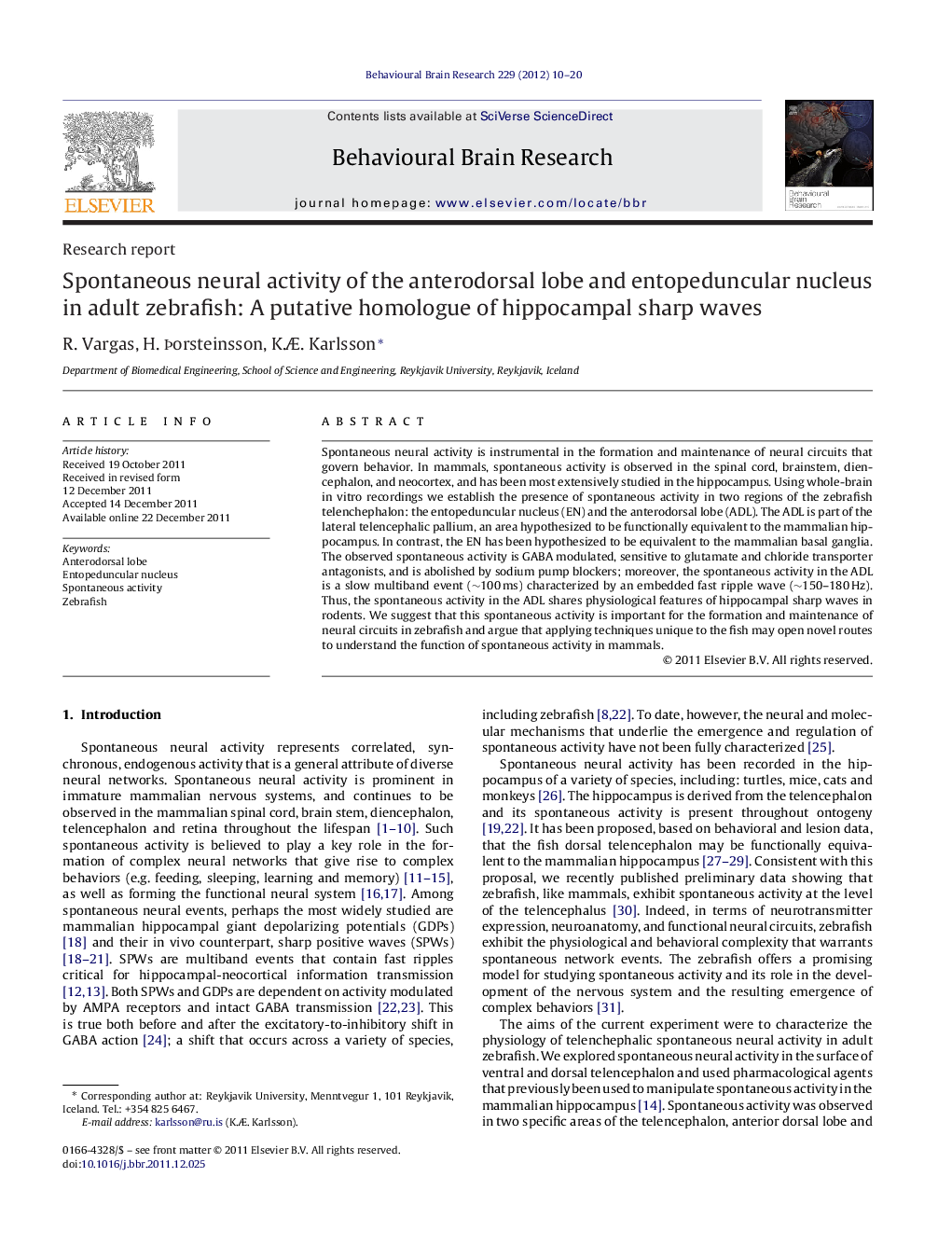| Article ID | Journal | Published Year | Pages | File Type |
|---|---|---|---|---|
| 4313339 | Behavioural Brain Research | 2012 | 11 Pages |
Spontaneous neural activity is instrumental in the formation and maintenance of neural circuits that govern behavior. In mammals, spontaneous activity is observed in the spinal cord, brainstem, diencephalon, and neocortex, and has been most extensively studied in the hippocampus. Using whole-brain in vitro recordings we establish the presence of spontaneous activity in two regions of the zebrafish telenchephalon: the entopeduncular nucleus (EN) and the anterodorsal lobe (ADL). The ADL is part of the lateral telencephalic pallium, an area hypothesized to be functionally equivalent to the mammalian hippocampus. In contrast, the EN has been hypothesized to be equivalent to the mammalian basal ganglia. The observed spontaneous activity is GABA modulated, sensitive to glutamate and chloride transporter antagonists, and is abolished by sodium pump blockers; moreover, the spontaneous activity in the ADL is a slow multiband event (∼100 ms) characterized by an embedded fast ripple wave (∼150–180 Hz). Thus, the spontaneous activity in the ADL shares physiological features of hippocampal sharp waves in rodents. We suggest that this spontaneous activity is important for the formation and maintenance of neural circuits in zebrafish and argue that applying techniques unique to the fish may open novel routes to understand the function of spontaneous activity in mammals.
► Characterization of spontaneous activity in the adult zebrafish telecephalon. ► Localization of spontaneous activity in entopeduncular nucleus and the anterodorsal lobe. ► Spontaneous activity includes the fast ripple and action potential “tail” waveforms. ► The spontaneous activity is similar to mammalian hippocampal sharp waves. ► Anterodorsal lobe is a putative fish homologue of the hippocampus.
